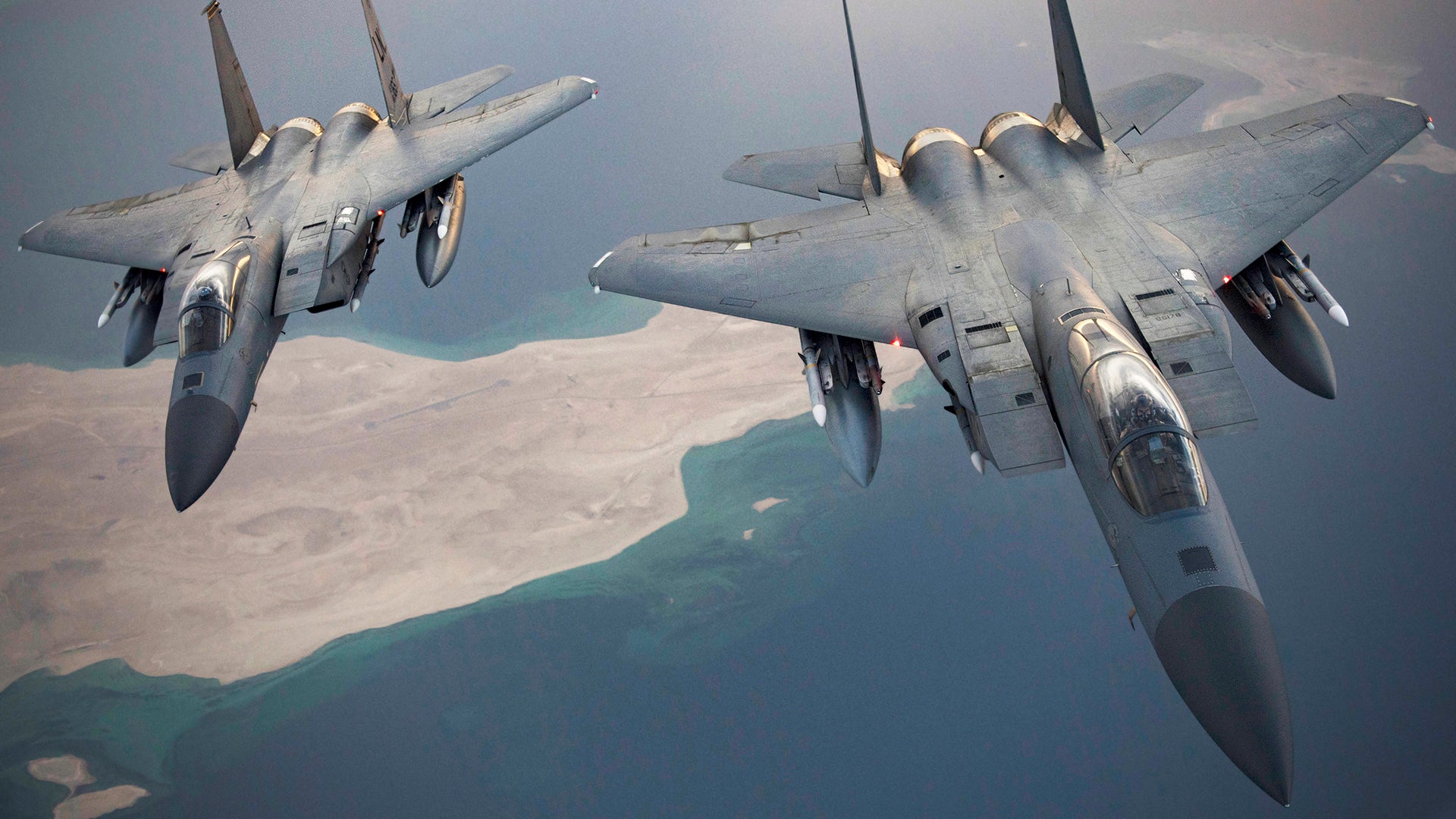Just hours after news hit that an Iranian tanker experienced some kind of explosions in the Red Sea, off the Saudi coast, the Pentagon announced that it was deepening its military deployments to The Kingdom with a host of new capabilities and thousands of additional American personnel. While the deployment of two fighter squadrons, two Patriot missile batteries, and one Terminal High-Altitude Air Defense (THAAD) system, in addition to what’s already there, is very significant, a detail that most have glossed over is what’s most intriguing—the Air Force is setting up a new Air Expeditionary Wing in Saudi Arabia, one that could quickly grow in size and that could potentially be in place for years to come.
An official release from the Pentagon reads as such:
At the request of U.S. Central Command, Secretary of Defense Mark Esper authorized the deployment of additional U.S. forces and the following equipment to the Kingdom of Saudi Arabia:
- Two Fighter Squadrons
- One Air Expeditionary Wing (AEW)
- Two Patriot Batteries
- One Terminal High Altitude Area Defense system (THAAD)
Secretary Esper informed Saudi Crown Prince and Minister of Defense Muhammad bin Salman this morning of the additional troop deployment to assure and enhance the defense of Saudi Arabia.
Taken together with other deployments this constitutes an additional 3,000 forces that have been extended or authorized within the last month.
Since May, the Department of Defense has increased the number of forces by approximately 14,000 to the U.S. Central Command area of responsibility as an investment into regional security.
As we have stated, the United States does not seek conflict with the Iranian regime, but we will retain a robust military capability in the region that is ready to respond to any crisis and will defend U.S. forces and interest in the region.
Clearly, the deployment is defensive in nature. The aircraft that are most likely to deployed are F-15C/D Eagles, which have air-to-air as their only mission and are especially well equipped for detecting, identifying, and countering low-flying targets with small radar sections—such as drones and cruise missiles—with their powerful AN/APG-63V3 AESA radar sets and Sniper targeting pods. Saudi Arabia also operates a large quantity of F-15s in various configurations, including the most advanced ever built, the F-15SA.
While Patriot batteries and THAAD systems have the ability to swat down incoming ballistic missiles, the most potent and enduring capability being sent over to Saudi Arabia is the Air Expeditionary Wing concept. Although it has no aircraft permanently assigned, the AEW is the foundation for a highly agile and logistically capable support force to field all types of airpower in a constantly morphing and composite manner. This elastic, forward-deployed force concept has been hugely effective in the region, with the AEWs located at multiple major bases in the Middle East and prosecuting conflicts in Syria, Iraq, and Afghanistan, as well as other regional security missions.
Installing an AEW in Saudi Arabia is major step towards forming a permanent presence in the country. For many years, beginning after the Khobar Towers attack in 1996, the U.S. military had largely vacated Saudi Arabia and settled into bases in other Arab countries in the region. That is now changing as the U.S. looks to backstop Saudi Arabia’s defensive capabilities, many of which were purchased from the United States, but proved ineffective at countering the unprecedented drone and cruise missile strike on two of the Kingdom’s most important oil facilities last month. Saudi Arabia still has tens of billions of dollars in new air defense equipment on order from American defense contractors.
Considering that Saudi Arabia is the largest customer of American arms, backing up your product with good customer relations and on-sight support seems to be very much a factor here.
So, with all this in mind, is the U.S. planning on moving back into Saudi Arabia for the long-term? It’s impossible to answer that with certainty at this time, but clearly that is far more possible once an AEW is fully established than it is now. In fact, some sort of a long-term military presence is more probable than ever now. Considering all the other bases the U.S. has already invested in heavily that surround Saudi Arabia, this act seems to be more about supporting the Saudi Royal Family directly than about ensuring regional stability or supporting ongoing missions in the CENTCOM area of operations. With that being said, rebuffing another similar drone and missile attack could help stop an all-out war between Iran and Saudi Arabia—one that is very capable of boiling over into a broader conflict.
We will keep you updated as this story continues to unfold.
Contact the author: Tyler@thedrive.com
